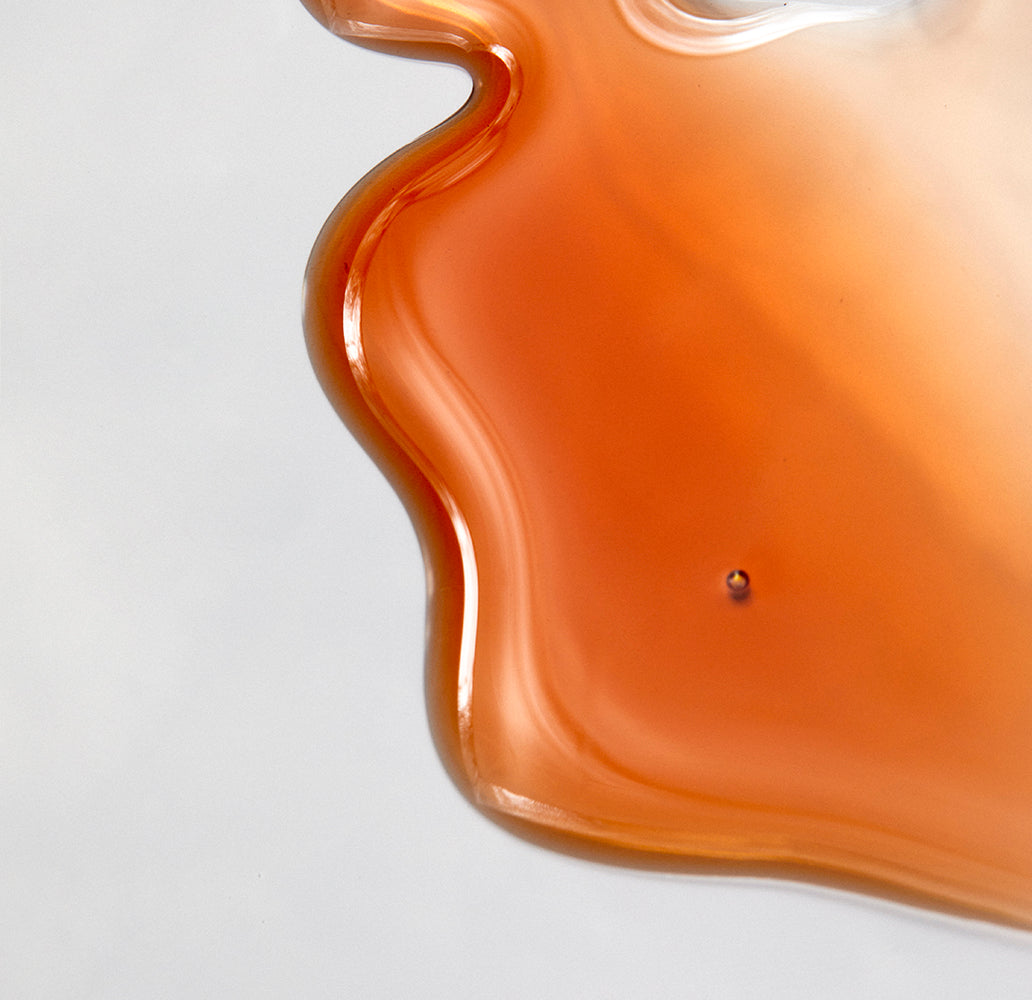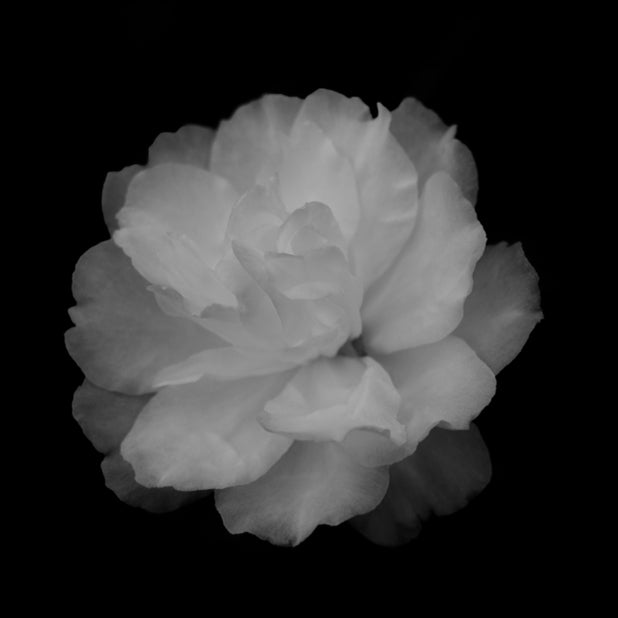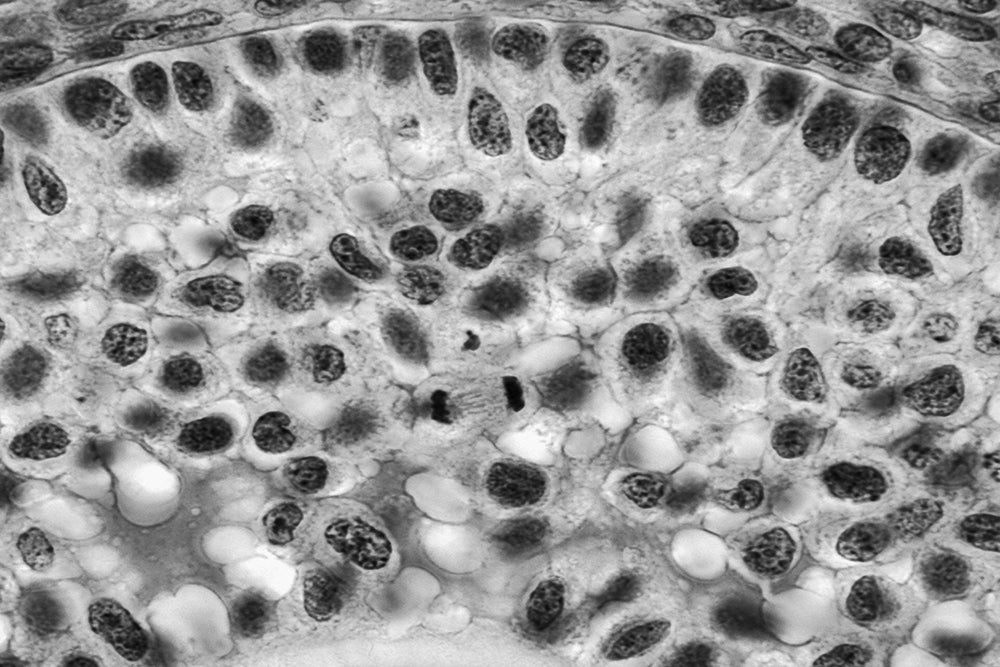
bakuchiol vs retinol

the bottom line
Retinoids – retinoic acid, retinaldehyde, and retinol - are seen as the gold standard in topical antiaging ingredients, but they have some serious limitations in terms of side effects. Enter bakuchiol, a relatively new ingredient in the beauty world which is regarded as a natural, gentler alternative to retinol. Although some may question whether or not this newbie can seriously supplant the queen of medical-grade skincare, we’re truly besotted with bakuchiol. Read on to discover why.
first layer: retinol
First, let’s clear up some confusion around the various terms. Retinoids are vitamin A derivatives which include retinol, retinaldehyde, retinyl esters, and retinoic acid. Retinoic acid has been shown to function at the molecular level and influences cell function by altering gene expression patterns. Retinoids have been found to be clinically effective against wrinkles and numerous skin conditions, including psoriasis, acne, and hyperpigmentation. However, there are two key negatives associated with the use of topical retinoids: 1) skin irritation - including dryness, peeling, redness, and burning – which doesn’t always resolve even after long-term use, and 2) teratogenic effects, which means that they can’t be used during pregnancy due the real risk of birth defects.
Compared to the other forms, retinols have the mildest effect on the skin. Next up in efficacy (and side effects) is retinaldehyde, followed by retinoid acid (Retin-A is one of the brand names for this strength and is available only by prescription). Retinols have been shown to increase cell turnover, which helps to refine skin texture; minimize fine lines and wrinkles by increasing collagen production; clearing pores; and lightening pigmentation.
second layer: bakuchiol
Although bakuchiol does not resemble retinoids at a structural level, there is marked similarity between the ingredients in terms of their effects on anti-aging genes and proteins. Bakuchiol has been shown to stimulate key anti-aging genes, extracellular matrix* genes, and dermo-epidermal junction* genes.
Fibroblasts located within the dermis of the skin secrete the protein collagen. Collagens are major components of the skin’s extracellular matrix (type I and type III collagen) and basement membrane (type IV collagen). Bakuchiol has been demonstrated to upregulate types I and IV collagen, and to stimulate type III collagen. It has notable collagenase and elastase inhibitory activity, too, which indicates that it is able to stop the aging machine (so to speak) by limiting the enzymes that break down the collagen and elastin found in our skin’s dermis.
Bakuchiol decreases pigment by means of its antioxidant effects as well as its ability to disrupt melanin synthesis by blocking both alpha-melanocyte stimulating hormone activation and tyrosinase, the rate-limiting step in melanin synthesis. Bakuchiol also fights acne by down-regulating the formation of 5-alpha-reductase, an enzyme that converts testosterone to dihydrotestosterone (DHT) with a subsequent increase in excess oil production. Bakuchiol exhibits activity against organisms implicated in acne, including Propionibacterium acnes, Staphylococcus aureus, and Candida, which is especially important given increasing drug resistance. Finally, bakuchiol improves hydration by up-regulating the natural synthesis of hyaluronic acid, which helps to improve hydration of the skin.
Chaudhuri et al evaluated 16 volunteers who received a lotion containing 0.5% of bakuchiol. After 12 weeks, there were statistically significant reductions in wrinkle depth and skin roughness. Improvements in elasticity, skin firmness, and skin tone were also noted. While results were apparent at 4 weeks, they were more remarkable at 8 weeks and 12 weeks, suggesting a cumulative effect with continued use.
Chaudhuri et al also studied the use of bakuchiol in acne-affected skin by performing a pilot study with 1% bakuchiol, 2% salicylic acid, or 1% bakuchiol with 2% salicylic acid. The best results were seen in the combined bakuchiol-salicylic acid group, who showed a 70% decrease in acne lesions and inflammation after six weeks of twice daily use. Bakuchiol-only patients had a reduction of 57%, followed by salicylic acid patients who experienced a 48% decrease. None of the patients experienced adverse effects with any of these products.
third layer: bakuchiol versus retinol
The best way to compare and contrast the efficacy of any two topicals is to put them side-by-side, both in the lab (in vitro) and on test volunteers (in vivo).
Bluemke et al examined the activity profile of bakuchiol and compared it to retinol in an in vitro study. They measured the ingredients’ antioxidative capacity and power; effects on various factors including fibroblast growth factor* and collagen* types I and VII; and epidermal regeneration of wounds. Bakuchiol demonstrated increased capacity to react with free radicals and significantly higher antioxidative efficacy when compared to retinol. Inflammatory factors (prostaglandin E2 and macrophage migration inhibitory factor) were decreased by both ingredients. However, the effect on prostaglandin E2 was more remarkable following bakuchiol administration than with retinol. Bakuchiol alone increased fibroblast* growth factor 7, while both bakuchiol and retinol increased levels of fibronectin*, collagen type I, and collagen type VII levels. After four weeks of treatment, bakuchiol-treated areas showed a significant increase in fibronectin* protein values, while areas treated with retinol did not. When wounds were treated with either bakuchiol or retinol, only bakuchiol was noted to increase regeneration of the epidermis.
A clinical (in vivo) study by Dhaliwal et al evaluated the effects of bakuchiol versus retinol in a double-blinded, prospective study – which means that neither the study administrators nor the recipients knew which cream they were receiving until after the trial had ended. They evaluated 44 volunteers who randomly received creams with either 0.5% of retinol or 0.5% of bakuchiol. Both ingredients significantly reduced fine wrinkles by the 12-week time point, without differences between the two ingredients. Pigmentation was also assessed and at 12 weeks, 59% of the bakuchiol group noted improvement in their hyperpigmentation, while 44% of the retinol had improvements. The most significant difference between the two groups was found in the degree of adverse effects, in that there was significantly more scaling and stinging in the retinol group. While both bakuchiol and retinol produced some degree of redness, itching, and burning, this was more notable in the retinol group.
fourth layer: how we do it
We’re truly besotted with bakuchiol. It’s a multi-dimensional ingredient with antioxidative and anti-inflammatory activity which is capable of treating pigmentation, acne, pigmentation, and wounds. Not only does it equal or surpass retinol in most areas, it’s significantly kinder to sensitive skin and is not contraindicated in pregnancy.
Bakuchiol is the star ingredient in our bakuchiol & pomegranate facial oil. Layered with cucumber oil, sea buckthorn seed oil, rosehip seed oil, bisabolol, and coenzyme Q10, it’s skin’s very own time machine. Fluorescent spandex not included.
All this and more at www.anokhaskincare.com .
xx
anokha
references:
- Chaudhuri RK, Bojanowski K. Bakuchiol: a retinol-like functional compound revealed by gene expression profiling and clinically proven to have anti-aging effects. Int J Cos Sci 2014; 36: 221-230.
- Dhaliwal S, Rybak I, Ellis SR et al. Prospective, randomized, double-blind assessment of topical bakuchiol and retinol for facial photoageing. Br J Dermatol 2019; 180: 289-296.
- Chaudhuri RK, Marchio F. Bakuchiol in the management of acne-affected skin. Cosmet Toilet 2011; 126: 502-510.
- Bluemke A, Ring AR, Immeyer J et al. Multidirectional activity of bakuchiol against cellular mechanisms of facial ageing – experimental evidence for a holistic treatment approach. Int J Cosmet Sci 2022; 44: 377-393.
- Sadgrove NJ, Oblong JE, Simmonds MSJ. Inspired by vitamin A for anti-ageing : searching for plant-derived functional retinoid analogues. Skin Health Dis 2021; 1: e36.
- Haraguchi H, Inoue J, Tamura Y, Mizutani K. Inhibition of mitochondrial lipid peroxidation by Bakuchiol, a meroterpene from Psoralea corylifolia. Planta Med 2000; 66(6): 569-71. doi: 10.1055/s-2000-8605. PMID: 10985089.
- Haraguchi H, Inoue J, Tamura Y, Mizutani K. Antioxidative components of Psoralea corylifolia (Leguminosae). Phytother Res 2002; 16(6): 539-44. doi: 10.1002/ptr.972. PMID: 12237811.
- Adhikari S, Joshi R, Patro BS, et al. Antioxidant activity of bakuchiol: experimental evidence and theoretical treatments on the possible involvement of the terpenoid chain. Chem Res Toxicol 2003; 16(9): 1062-9. doi: 10.1021/tx034082r. PMID: 12971793.
- Backhouse CN, Delporte CL, Negrete RE et al. Active constituents isolated from Psoralea glandulosa L. with antiinflammatory and antipyretic activities. J Ethnopharmacol 2001; 78(1): 27-31. doi: 10.1016/s0378-8741(01)00309-9. PMID: 11585684.
- byrdie.com
- Oblong JE, Bissett DL. In Cosmeceuticals. Edited by Zoe Diana Draelos. 2005. Philadelphia: Elsevier, pp. 35-41.
definitions:
antioxidant: an antioxidant is a compound that inhibits oxidation. free radicals create oxidative stress and an inflammatory response which in turn can damage DNA and result in injury to the epidermal and dermal layers of the skin. in the skin, this manifests as premature aging with decreased elasticity leading to increased wrinkling, age spots, and decreased skin tone. antioxidants stabilize free radicals, which in turn limits their ability to damage the body. some of our favorite ingredients are notable for their antioxidant effects, including elderberry, plum, and lychee.
basement membrane: the basement membrane is a type of extracellular matrix which provides cell and tissue support. it sits between the epidermis and dermis and helps to keep them connected.
collagen: a fibrous protein that forms part of the dermal matrix, connective tissue, cartilage, and bone.
dermis: the dermis is the layer of tissue beneath the epidermis which contains blood vessels, nerve endings, sweat glands, and hair follicles.
dermo-epidermal junction: the junction between the epidermis and dermis provides adherence between the epidermis and dermis, mechanical support to the epidermis, and serves as a barrier to the exchange of cells and large molecules across the junction.
elastin: elastin is a protein that forms the main component of elastic fibers in the skin. it provides stretch, recoil, and elasticity.
extracellular matrix: the extracellular matrix is a three-dimensional network of extracellular macromolecules and minerals, including collagen, enzymes, proteins, and hydroxyapatite that provide structural and biochemical support to surrounding cells.
fibroblast: a fibroblast is a cell that contributes to the formation of connective tissue within the body. fibroblasts secrete collagen proteins which help to maintain the structural framework of the tissues.
fibronectin: fibronectin is a glycoprotein of the extracellular matrix that plays an important role during tissue repair. the plasma form of fibronectin circulates in the blood and upon tissue injury is incorporated into clots that affect platelet function to help stop bleeding.
for more beauty definitions, explore the glossary.
faqs:
what is the key difference between bakuchiol and retinol?
both bakuchiol and retinol are antiaging ingredients. retinoic acid has been shown to function at the molecular level and influences cell function by altering gene expression patterns. although bakuchiol does not resemble retinoids at a structural level, it does stimulate key anti-aging genes, extracellular matrix* genes, and dermo-epidermal junction* genes.
should I select bakuchiol or retinol for my skin?
both bakuchiol and retinol are excellent ingredients for facial rejuvenation, including treating pigmentation, acne, and fine wrinkles. bakuchiol has also been shown to promote wound healing following injury. bakuchiol has fewer side effects than retinol and is an ideal choice for sensitive skin.
do you recommend bakuchiol vs retinol for acne?
both bakuchiol and retinol are excellent ingredients for acne. Chaudhuri et al studied the use of bakuchiol in acne-affected skin by performing a pilot study with 1% bakuchiol, 2% salicylic acid*, or 1% bakuchiol with 2% salicylic acid*. the best results were seen in the combined bakuchiol-salicylic acid group, who showed a 70% decrease in acne lesions and inflammation after six weeks of twice daily use.
should I use bakuchiol vs retinol during pregnancy?
retinols are contraindicated during pregnancy secondary to the significant risk of birth defects. bakuchiol has not been studied for use during pregnancy, so we recommend that you speak with your obstetrician prior to changing skincare regimens during pregnancy.



leave us a comment
This site is protected by reCAPTCHA and the Google Privacy Policy and Terms of Service apply.